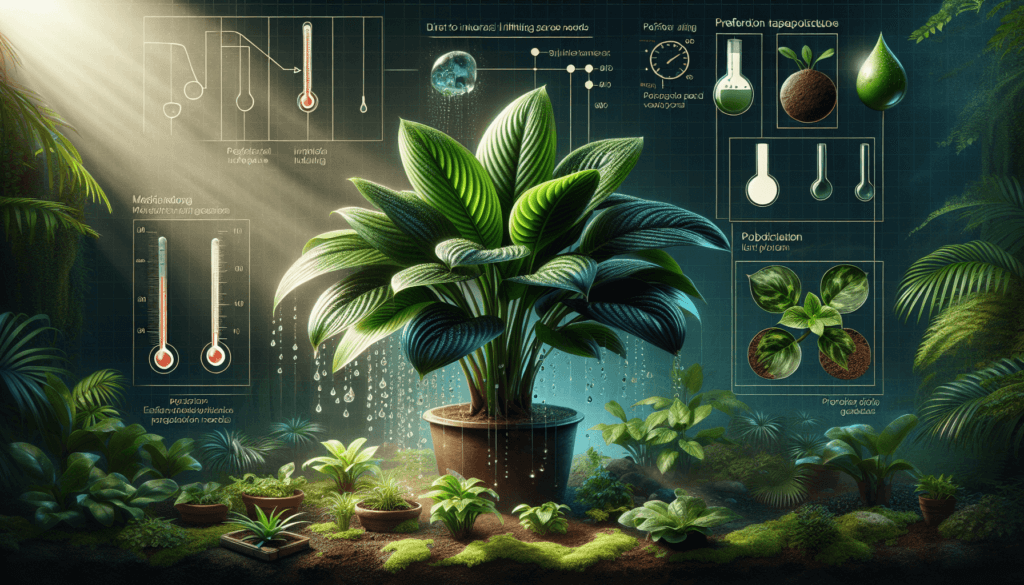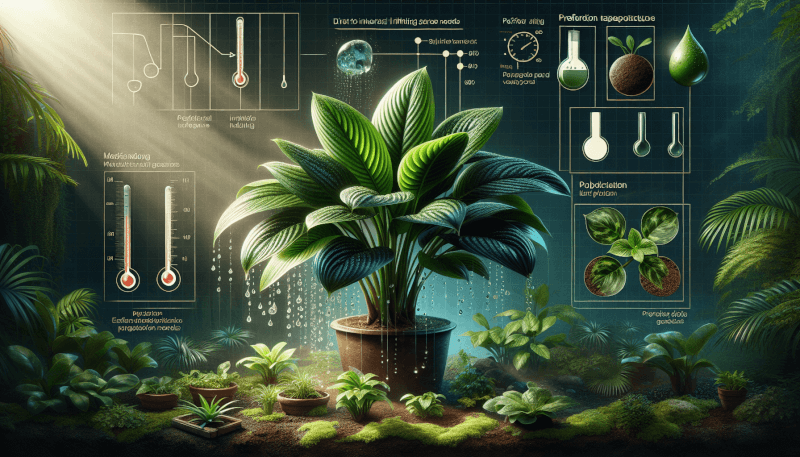Have you ever wondered how to take care of your beloved houseplants effectively? Look no further than “Vicks Plant Care.” With their expert knowledge and practical tips, Vicks Plant Care offers a comprehensive guide on how to nurture your indoor plants to perfection. Whether you’re a seasoned plant parent or just starting out, Vicks Plant Care has got you covered. From essential watering techniques to providing the right amount of light, their tips will help your plants thrive and flourish. Say goodbye to wilted leaves and hello to a vibrant, lush indoor jungle with Vicks Plant Care.

Choosing the Right Vicks Plant
When it comes to choosing the right Vicks plant for your home, considering your climate and growing conditions is essential. Vicks plants thrive in warm and humid environments, so if you live in a region with a colder or drier climate, you may need to take extra measures to create the ideal conditions for your plant. Researching different types of Vicks plants is also important, as there are several varieties to choose from, each with its own unique characteristics. Take into account factors such as size, leaf color, and growth habit to find a plant that suits your preferences.
Planting and Location
Selecting a suitable location for your Vicks plant is crucial for its overall health and growth. These plants prefer indirect sunlight, so choose an area in your home that receives bright but diffused light. Avoid placing your plant in direct sunlight, as this can cause the leaves to scorch. Additionally, consider using a container or pot for your Vicks plant, as this allows for greater control over its environment. Make sure the planting site has proper drainage to prevent waterlogging, as Vicks plants are susceptible to root rot.
Watering and Humidity
Proper watering and humidity levels are vital for the well-being of your Vicks plant. Aim to water the plant consistently, keeping the soil moist but not overly saturated. Overwatering can lead to root rot, while allowing the plant to dry out completely can cause stress and leaf drop. It’s also important to maintain proper humidity levels, as Vicks plants prefer a more humid environment. Consider using a humidifier or placing your plant on a pebble tray filled with water to increase humidity and keep the plant thriving.
Temperature and Light Requirements
Vicks plants prefer moderate temperatures, so try to maintain a comfortable range of around 65-80°F (18-27°C). Avoid exposing your plant to extreme hot or cold conditions, as this can lead to stress and damage the leaves. In terms of lighting, ensuring your Vicks plant receives adequate light is crucial for healthy growth. However, direct sunlight or intense heat can be harmful, so it’s best to position the plant away from windows or use a sheer curtain to filter the light.

Soil and Fertilization
Using the right type of soil and providing adequate fertilization are essential for the successful care of your Vicks plant. These plants thrive in well-draining, acidic soil. You can achieve this by using a mixture of peat moss, perlite, and regular potting soil. Adding organic matter or perlite can further improve drainage and help create the ideal growing conditions. Fertilize your Vicks plant regularly with a balanced liquid fertilizer, following the instructions on the packaging. Be careful not to over-fertilize, as this can lead to fertilizer burn and harm the plant.
Pruning and Propagation
Regular pruning is necessary to maintain the shape and health of your Vicks plant. Remove any dead or damaged leaves and stems to encourage new growth. You can also propagate your Vicks plant through stem cuttings. Simply select a healthy stem, make a clean cut just below a leaf node, and place the cutting in water or a well-draining soil mix. Ensure the propagated plant receives proper care during the rooting process, provide adequate moisture, and protect it from direct sunlight until it establishes roots.
Disease and Pest Control
While Vicks plants are generally resilient, it’s important to watch out for common plant diseases and pests that may affect them. Keep an eye out for signs of leaf spot, powdery mildew, or root rot. If you notice any disease symptoms, promptly treat the plant with appropriate solutions, such as a fungicide or by adjusting environmental conditions. Preventing pests from infesting your Vicks plant is crucial to its overall health. Use organic and environmentally friendly pest control methods, such as neem oil or insecticidal soap, to keep pests at bay.
Harvesting and Usage
Harvesting leaves from your Vicks plant allows you to enjoy their medicinal and aromatic benefits. Only harvest leaves as needed, taking care not to remove too many at once, as this can stress the plant. Store the harvested leaves properly to retain their freshness and aroma. You can dry them by hanging them upside down in a cool and well-ventilated area. Utilize Vicks leaves for various purposes, such as making herbal teas, aromatic oils, or soothing balms. Get creative and experiment with different recipes and home remedies to fully enjoy the versatility of the Vicks plant.
Common Mistakes and Troubleshooting
To ensure the optimal care for your Vicks plant, it’s important to avoid common mistakes and troubleshoot any issues that arise. Overwatering or underwatering are common pitfalls, so make sure to water your plant consistently and adjust watering frequency based on the plant’s needs. Ensure proper drainage to prevent root rot and consider repotting if you notice stagnant water in the container. Keep an eye out for signs of nutrient deficiencies, such as yellowing leaves or stunted growth, and adjust fertilization accordingly. If you encounter any challenges, don’t hesitate to seek guidance or advice from experienced gardeners or plant experts.
Conclusion
To successfully care for your Vicks plant, it’s crucial to consider factors such as climate, growing conditions, and the specific needs of the plant. Providing the right location, lighting, soil, and humidity levels will ensure healthy growth and vibrant foliage. Regular watering, proper fertilization, and adequate pruning and propagation will help maintain the plant’s shape and vigor. Being vigilant for signs of disease or pest infestation and addressing them promptly with organic solutions are essential for a thriving Vicks plant. Harvesting and utilizing the leaves for their medicinal and aromatic properties adds an extra benefit to owning a Vicks plant. By following these guidelines and seeking advice when needed, you can fully enjoy the benefits and beauty of this lovely plant. So go ahead, choose the right Vicks plant for you, and embark on a delightful journey of plant care and appreciation.


